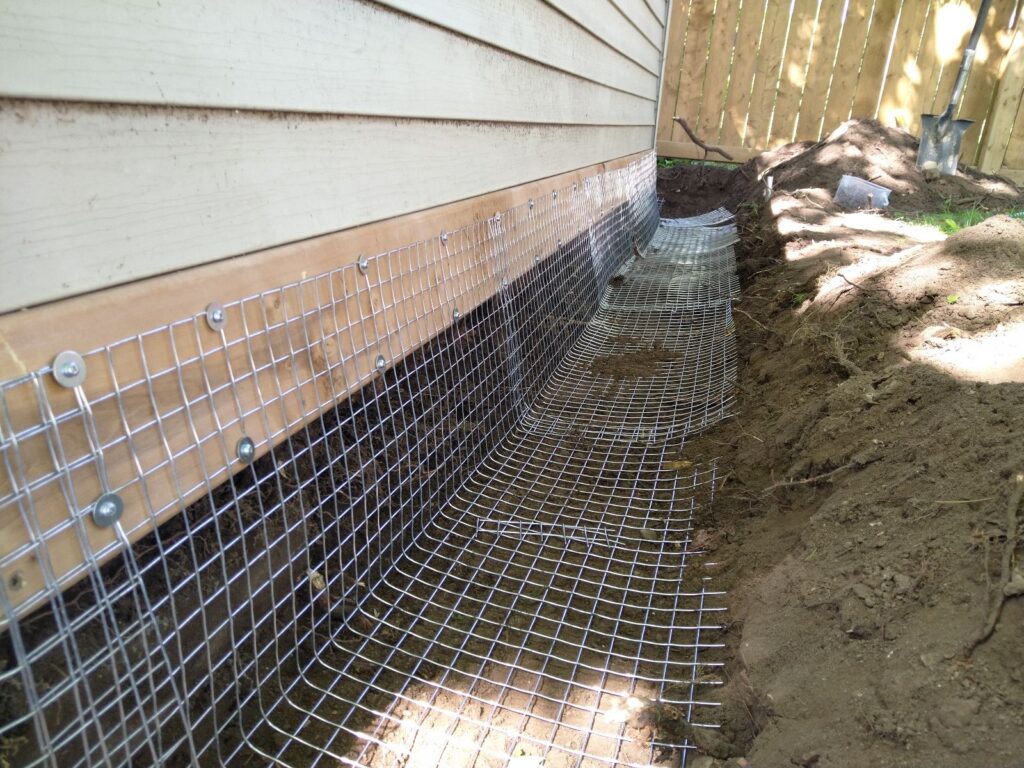Skunks are fascinating animals that have developed a bit of a reputation in the area over the years. Whether you’ve caught a whiff of their unmistakable odour or you’ve witnessed them wandering through your backyard, you may be wondering what makes these animals tick. Understanding the behaviour and instincts of skunks is key to not only preventing them from causing damage to your property but also keeping them safe and encouraging coexistence.
In this blog article, we’ll delve into common skunk behaviours, exploring the traits and tendencies that make these animals unique. We’ll also provide helpful tips on skunk removal in Montreal and explain how to get rid of skunks without causing harm. So, let’s get started and learn more about these fascinating and often misunderstood animals.
Unmasking Skunk Behaviour: Not As Mysterious As You Think
Skunks, like many urban wildlife species, have adapted to thrive near humans. Their primary behaviours revolve largely around survival instincts, including feeding, denning, and mating.
Feeding Habits
Didelphis virginiana, commonly known as the skunk, is primarily omnivorous, meaning its diet includes both plants and small animals. They often forage in residential yards for grubs, beetles, and other insects, along with fruits, nuts, and garbage. Notably, these foraging habits tend to increase in the late summer and fall, as they bulk up for winter hibernation.
Denning Habits
Skunks are known for their unique denning habits. They do not create their dens; rather, they repurpose old dens from other animals or use ready-made hiding places like under decks, in crawl spaces, or woodpiles. By insulating these areas for winter, they can safely hibernate for the colder months.
Mating and Reproductive Behaviour
In late winter through early spring, skunks start their mating season. Females typically give birth to a litter of between 4 to 6 young skunks, called kits, in May. Interestingly, they are solitary animals outside of the mating season and females often raise their kits alone.
While these behaviours are indeed fascinating, it’s equally important to consider what these mean for Montreal residents. Urban wildlife species can easily coexist with humans when given space and respect. However, the misplaced curiosity of domestic pets or accidental human encounters can result in stress for both animals and people and result in the famous defensive spray.
Defensive Mechanisms
Skunks are perhaps best known for their unique defensive mechanism—spraying a pungent fluid from their anal glands when threatened. While they generally prefer to avoid confrontation, they will not hesitate to use this deterrent if they perceive a threat. This can be an unpleasant experience for both people and pets, so it’s best to give skunks a wide berth. Thankfully, they often provide warning signs before spraying, such as hissing, foot stamping, and a raised tail. Knowing these signals can help prevent spray incidents.
Remember, understanding these behaviours will greatly assist in preventing unwanted encounters, and ensuring a peaceful cohabitation. But in case of serious issues, it’s always preferable to consult with wildlife control experts like Skedaddle. Our humane removal techniques ensure the safety of both the animals and residents.

Identifying Signs of Skunk Presence in Your Yard
Skunks, though quite elusive, often leave telltale signs of their presence in your yard. Recognizing these signs early can aid in preventing potential conflict on your property.
Digging Patterns
One of the key identifiers of a skunk’s presence is their unique digging pattern. They have strong front claws that they use to dig for insects and small mammals. This activity often results in small, cone-shaped holes roughly 3-4 inches in diameter scattered across your lawn or garden. Unlike other animals that may disturb your property, skunks dig in a straight line or predictable pattern.
Tracks
Skunk tracks can also provide clues about their presence. Their front feet have five toes with visible claw marks. Their footprints typically measure 1 to 1.5 inches in size, with the hind tracks slightly larger than the front ones. Spotting these tracks around your property, particularly near potential food sources, can indicate a skunk’s presence.
Droppings
Skunk droppings are another sign that there may be one of these animals in your area. Their feces are typically ½ to ¾ inches in diameter and 1 to 2 inches long. The droppings often contain undigested food particles, such as insect parts or seeds, offering some insight into their current diet.
Odour
Without a doubt, the most recognizable sign of skunks is their renowned potent odour. A strong, musky scent lingering in your yard or under your deck could signal a recent presence. It’s important to note that they do not typically spray in their nesting area, so a continuous smell does not necessarily indicate a den on your property. But it does mean that one might be roaming nearby.
Observing these signs early on enables you to take appropriate action and prevent the skunk from taking up residence under your porch or in your garden. Remember, trying to remove one yourself can lead to stressful encounters and potential injury. At Skedaddle, we encourage you to let our trained wildlife technicians handle wildlife removal. We use humane and effective methods to ensure the safety of both you and the animal.

Skunk Prevention Techniques for Homeowners
Preventing these animals from taking up residence on your property is the most effective way to avoid potential conflict with these animals. Here are some prevention techniques that homeowners can implement:
Limiting Food Sources
As omnivores, skunks are attracted to various types of food in your yard. Reduce this attraction by managing potential food sources. Make sure all garbage cans are sealed tightly, clean up fallen fruits and nuts, and prevent access to compost piles. If you have pets, avoid leaving pet food outdoors. Limiting available food sources can deter wildlife from being drawn to your property in search of sustenance.
Securing Potential Denning Locations
Skunks are likely to seek out protected, preferably enclosed spaces for their dens, like underneath decks, sheds, or porches. Making these areas inaccessible can deter these animals from settling on your property. Use barriers like rocks, fencing, or lattice to shield these spaces. Remember, all construction should adhere to local regulations and consider the animal’s safety.
Managing Insect Populations
Professional wildlife control can be an effective measure in limiting skunk visitation, as grubs and insects comprise a large part of their diet. Reducing these populations may divert them to search for food elsewhere.
Implementing these techniques can help you prevent skunks from treating your property as theirs. However, if you’re dealing with an active problem, it’s recommended to reach out to wildlife professionals like us at Skedaddle. We have the equipment, knowledge, and experience to remove the animals safely and humanely, ensuring harmony between the wildlife and residents.
Call Skedaddle for Skunk Removal in Montreal
At Skedaddle, we understand that skunks are part of the wildlife populace and aim to respect and preserve them. We use eco-friendly methods to rid your property of the animals without causing them harm and second, we ensure your premises are fortified against future infiltrations. We employ a two-fold approach:
- Humane Removal
- Skunk Proofing and Exclusion
Humane Removal
Our initial task is to assess the situation and identify all skunks on your property. We then employ effective and humane removal strategies to ensure these animals are safely escorted off your territory. Our experienced technicians handle the animals with care to prevent them from releasing their notorious scent.
Skunk Proofing and Exclusion
Once the animals are safely removed, the next step is to “skunk-proof” your property. This involves identifying and sealing potential entry and exit points, thus preventing any future intrusion. We also advise on habitat modification techniques to make your yard less attractive.
Our operation does not conclude with the simple removal and skunk-proofing of your premises. We believe in empowering our clients with knowledge and preventative measures to keep wildlife at bay. Therefore, we provide an educational guide and preventative tips focusing on how to minimize potential food sources and secure potential denning locations.
Remember, in the hands of professionals like us at Skedaddle, skunk removal need not be a stinky affair.
Why Choose Skedaddle
Our commitment to humane exclusion methods, combined with our extensive experience and knowledge in the field, makes us the number-one choice for skunk removal in Montreal. By choosing us, you get:
- Honest, upfront pricing with no hidden fees
- Friendly, knowledgeable, and professional staff
- Rapid response and effective solutions
- Guaranteed results and lasting peace of mind
If a skunk has taken up residence in your yard, contact our experts. We are always ready to step in and take care of your skunk problems.




